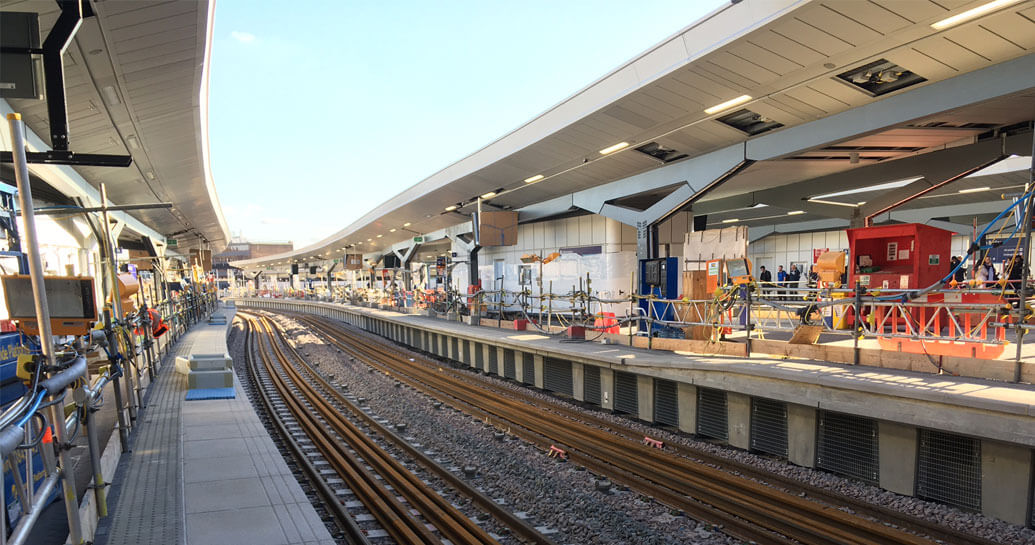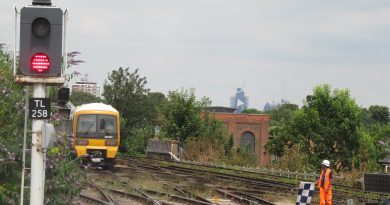London Bridge rebuild work nears conclusion
Three years of disruption for passengers through London Bridge stations is nearing the end. From the 2nd January, Cannon Street trains will again be able to stop at London Bridge after 18 months of passing straight through as Network Rail completes the bulk of platform and track work.
Work continues at London Bridge station. This platform will be open to passengers on Tuesday #londonbridge pic.twitter.com/EJ8lMs4Ajx
— Thameslink Programme (@TLProgramme) December 28, 2017
This will hopefully lessen the strain on Lewisham station as people can now jump on the first train at their local station and change at London Bridge.
One of the biggest changes is a large new concourse below all tracks including a large entrance/exit onto Tooley Street.
New escalators and stairs, all will be ready to open on Tuesday when Cannon Street trains resume calling at London Bridge pic.twitter.com/yxQBGmMElw
— Thameslink Programme (@TLProgramme) December 29, 2017
Unfortunately the current curtailed timetable remains in force for another five months. Stations such as Greenwich and Deptford will continue with a 40% cut in capacity compared to pre-rebuild levels, with near 30 minute gaps in the evening peak.
One stark juxtaposition will be clapped out and decrepit Southeastern Networker trains passing through the shiny new station. A post last week looked at the state of many trains as chronic problems increase.
Improvements
But in May a far better timetable should be introduced with services going back to pre-2015 levels. Greenwich will go from as little as two trains per hour in the evening peak to six again, with two of those six being Thameslink services.
Note, there isn’t though much in the way of improvements above pre-2015 levels as London Bridge work mainly benefits Thameslink trains to other parts of London. The Thameslink service through Greenwich doesn’t bring a net increase as six Southeastern trains per hour drops to four.
One of the biggest benefits for most South East London passengers will be more through-platforms and separate tracks for Thameslink tracks which should help lessen the stacking of trains often seen on the approach to London Bridge.
Bizarrely, after May 2018’s improvements it appears things could go into reverse for Southeastern passengers in 2022 under the Department for Transport’s plans for the next Southeastern franchise, with stations near large areas of housing growth such as Woolwich Dockyard (which will be near many new homes planned in the Charlton Riverside Masterplan) and Erith and Belvedere (near thousands of planned homes in Bexley’s Growth Strategy) potentially seeing service cuts.
You can help support me in running the site by donating here. Many thanks.
Running a site alone takes time and a fair bit of money. Adverts are far from enough to cover it and my living costs as a private renter.
You can support me including via Paypal here Another option is via Patreon by clicking here You can also buy me a beer/coffee at Ko-fi here There's also a Facebook page for the site here Many thanks






“lessen the strain on Lewisham station as people can now jump on the first train at their local station and change at London Bridge”
Unless it’s a Victoria train.
In fairness those run only along the Bexleyheath line, and trains to either Cannon Street or Charing Cross (combined) will be more frequent, so someone heading for London Bridge wouldn’t normally board a Victoria train anyway.
It’s now a long way up to platform level and makes it harder to just catch your train. I remember legging it up or down the slope and racing to an adjoining platform. Just as well that I no longer work and train travel is now a rare thing. On the upside, the 47 bus won’t take forever to rejoin it’s route at Tower Bridge.
The distances between the Tube station entrance on Tooley Street and the Southeastern platforms is the same – they are now accessed via a single escalator rather than an escalator and then a sloping pathway up a narrow corridor, which inevitably caused awful bottlenecks at peak times. Now there’s more space below the platforms for passengers to circulate, and a new entrance on Tooley Street so that everyone isn’t funneled through to the Tube station, which will also ease congestion as not everybody will want to go to the Tube!
I think that passenger congestion is one of the biggest problems for major stations – and even minor ones, considering the mess that TfL have landed themselves in by only having five gates and no secondary exits at Abbey Wood! Next on my list would be Waterloo East, which suffers from the same problem as London Bridge did – too many narrow corridors and not enough alternative exits. Charing Cross fares better as it’s a terminus, albeit a smaller one, and it has the Northumberland Avenue exit in the peaks.